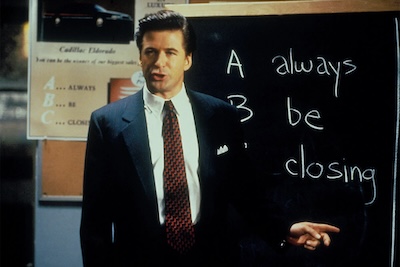Few series in recent memory have been as overlooked as show creator Soo Hugh’s brilliant Korean/Japanese production, Pachinko. In its extraordinary first season, Pachinko scored raves from critics, won a Peabody award, and was nominated heavily by major critical groups. However, the Emmys could only find a solitary nomination for season one, in the category of Best Main Title Sequence. A nod that Pachinko deserved (it also deserved to win), but was still a paltry statement by the Television Academy.
It’s hard to understand what Pachinko is missing. The multi-decade story of Sunja’s (the ever-emotive Minha Kim) family and their pre-WWII immigration to Japan has all the markings of a premier drama. The series is full of lush visuals, the actors are all top-shelf, and the direction is about as good as it gets. I was at first skeptical about Pachinko getting a second season. Not because there was anything wrong with the first season. On the contrary, the show’s debut arc was so magnificently rendered and felt so complete that I couldn’t see how they could match what Soo Hugh and team came up with in season one. Silly me.
As rich and vibrant as Season One was, the move into World War II was an escalation for both the characters and the show. And indeed, it did match the inaugural eight episodes.
For those who may be reading this, but either haven’t watched Pachinko, or have only sampled it and found the need for subtitles (which depending on if the actors are speaking Korean or Japanese, appear in different colors of text on your screen) to feel like homework, let me offer a primer.
Sunja is a young Korean girl who lives with her ailing father and gets pregnant by her married suitor named Koh Han-soo (a brilliant Lee Min-ho), whose moral flexibility wavers between good, bad, and all spaces in between. When Han-soo rejects the naive Sunja, and her father dies, she moves her family to Japan. There, she faces down poverty, tragedy, and a level of discrimination that will likely surprise those not familiar with the fraught history between Korea and Japan. I know it was eye-opening for me.
Pachinko spans a seventy-four-year time frame (1915-1989). The series expertly transitions from a young Sunja to an elderly Sunja (Oscar winner Youn Yuh-jung). In both time frames, there is tremendous hardship, and the discrimination, while more subtle in the later portion of the story, still lies just beneath the surface. Sunja’s grandson, Solomon (the charismatic Jin Ha), works in high finance in Japan and must prove himself far beyond even his white American colleague (well-played by Jimmi Simpson). Solomon is forced to take risks and work under suffocating conditions. One of my favorite sequences of the last few years occurs in season one, when Solomon sets aside personal gain to do the right thing. After he ruins a deal for his employer, he speeds out of the high rise building, sprints down the street, throws his jacket to the wind, rain starts to pour, and Solomon stops to take in a very talented group of buskers playing the Cure’s “In Between Days,” and dances in the downpour. To say it’s an exhilarating scene is to traffic in understatement.
Wonders abound throughout the first two seasons (I know from speaking with Soo Hugh that her cast and crew are hopeful for a third season from Apple TV) in both timelines. There’s a remarkably tender and tenuous scene between Sunja and a new suitor who couldn’t be more different than Han-soo. This new man, Isak (played with great subtlety by Steve Sanghyuan Noh), is a humble preacher who gingerly, almost in code, asks Sunja if she could “love another.” Like much of Pachinko, scenes tend to creep up on you and land with an often quiet power that can knock you off your feet.
Season Two is on par with Season One. No small feat, that. The secret of Sunja’s oldest son’s father inches towards a devastating reveal that has consequences that reach through decades. The specter and then the cruel reality of the war comes home, turning Sunja and her family into refugees of a sort who move to the countryside (after pensively agreeing to accept help from Han-soo) and live a spartan existence while waiting out the conflict. All while Solomon attempts to regain a foothold in the business world after being blackballed by his former employer, and questions the loyalty of his girlfriend (Anna Sawai of Shogun fame).
Does all of this seem like a lot? Probably so. But you can’t underestimate the deft artistry on display in Pachinko. The show moves between timelines without a single jarring moment. If you can handle the subtitles and the history lesson, you will find that the show opens you up to a culture and profound historical significance. I’m slow to use this word, but despite the massive degree of difficulty the show takes on, it’s one of the most perfect productions I’ve ever had the pleasure to take in.
What does Pachinko mean, you might ask? A pachinko machine is a low-stakes arcade game often used for gambling and is very popular in Japan. Think of it as similar to the strategy-free casino standby, the slot machine. The pachinko game plays both a metaphorical and literal role in the counterintuitive and deliriously enjoyable opening credits, as well as in the later, more modern-day storyline. However, Pachinko is anything but a low-stakes game. It is a human drama that lives at the tip-top of the food chain. There isn’t a single Emmy category that Pachinko shouldn’t be considered for. From best series, writing, direction, to crafts like production design and costuming, and last but not least, the show’s marvelous cast, Pachinko is well worthy across the board.
Will the Television Academy discover the show that takes place beyond the opening credits? I’m not sure, but we will get our answer on Tuesday, July 15. Let’s hope that answer isn’t a letdown. Pachinko is more than deserving of recognition, both in critical hosannahs and in gold hardware.









